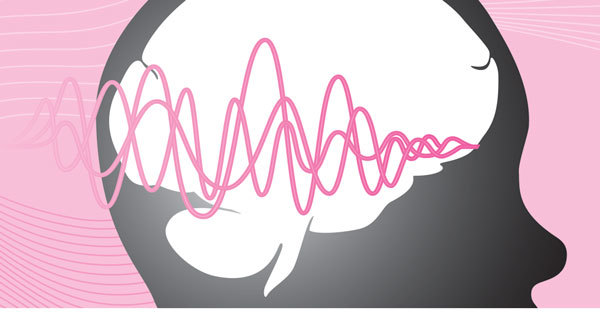If you haven’t seen it firsthand, you’ve heard the story: Someone gets hit and they go down hard. The crowd’s roar lessens; it does not look good.
The medics run over. The injured skater stirs. After a few tense moments, they sit up. There is no blood, no visible injuries. They stand on their own as the crowd cheers and the other players slowly stand from a single knee in solidarity. The injured party is fine – or are they?
A concussion is not a visible injury, but it is a very common injury in contact sports such as football, hockey, and roller derby. Education and awareness are important to prevent and properly assess concussions.
A concussion is a type of traumatic brain injury that can occur when there has been a jolt, blow, or just a bump to the head, neck, or face. It can occur any time the head moves back and forth rapidly, so it can even be caused by a blow to the body.
The consequences can be serious – a concussion can change the way the brain normally works, so it’s important to conduct a concussion assessment as soon as possible following an incident. The Sport Concussion Assessment Tool 5th Edition (SCAT5) checklist should be added to every roller derby league’s medical kit. It’s important for all league members to know when someone should be checked out by medical staff.
Symptoms of concussion that may be noticed by the participant are headache or pressure in the head, nausea or vomiting, balance problems or dizziness, vision problems or sensitivity, confusion, feeling sluggish or groggy, or just not “feeling right.” Symptoms that may be noticed by others include appearing dazed or stunned, showing mood or personality changes, or losing consciousness. Certain symptoms are considered danger signs and require immediate emergency care: loss of consciousness for any amount of time, headache that gets increasingly worse, repeated vomiting, slurred speech, seizures, increasing confusion, or unusual behavior. Some symptoms may not show up for several hours.
Per the WFTDA Risk Management Guidelines, a player who has suffered a concussion or shows signs of a concussion may not return to play on the day of the injury. A single symptom is enough to remove the participant from all gameplay.
Returning to normal activity is a structured process, increasing activity lightly to make sure the player can tolerate it without having symptoms. Stage one of rehabilitation is no activity, allowing the player to recover. Light aerobic exercise such as walking, swimming, or stationary cycling can be added in next, followed by non-contact skating drills, endurance skating, or speed skating. The player can then add on non-contact training drills and resistance training. Once medical clearance is obtained, the participant can practice with full contact. If each of these activities is tolerated successfully, they may return to normal gameplay. However, if even a single symptom comes up during an activity, the player should step back down an activity level. This process can take several weeks.
However, there are ways to prevent concussions from happening in the first place. While there is no such thing as a “concussion-proof” helmet, proper fit and maintenance of a safety-certified helmet can reduce the impact to the head. Helmets should have a snug fit and should also sit properly on the head, covering the frontal lobe, with the straps of the helmet creating a Y-shape under each earlobe.
Raising awareness can help prevent more traumatic brain injuries from occurring. Remember the 5 Rs: Reduce, Recognize and React, Return, and Resources.
You can reduce the impact by getting a properly fitting, certified helmet. You should be able to recognize and react when a possible injury has occurred by knowing what to look for and realizing when someone needs medical attention. Return to full gameplay following the Return to Play Protocol in the WFTDA Risk Management Guidelines. Finally, educate yourself and others on concussion resources by sharing this information.

Like what we do? Consider chipping in a few bucks.

